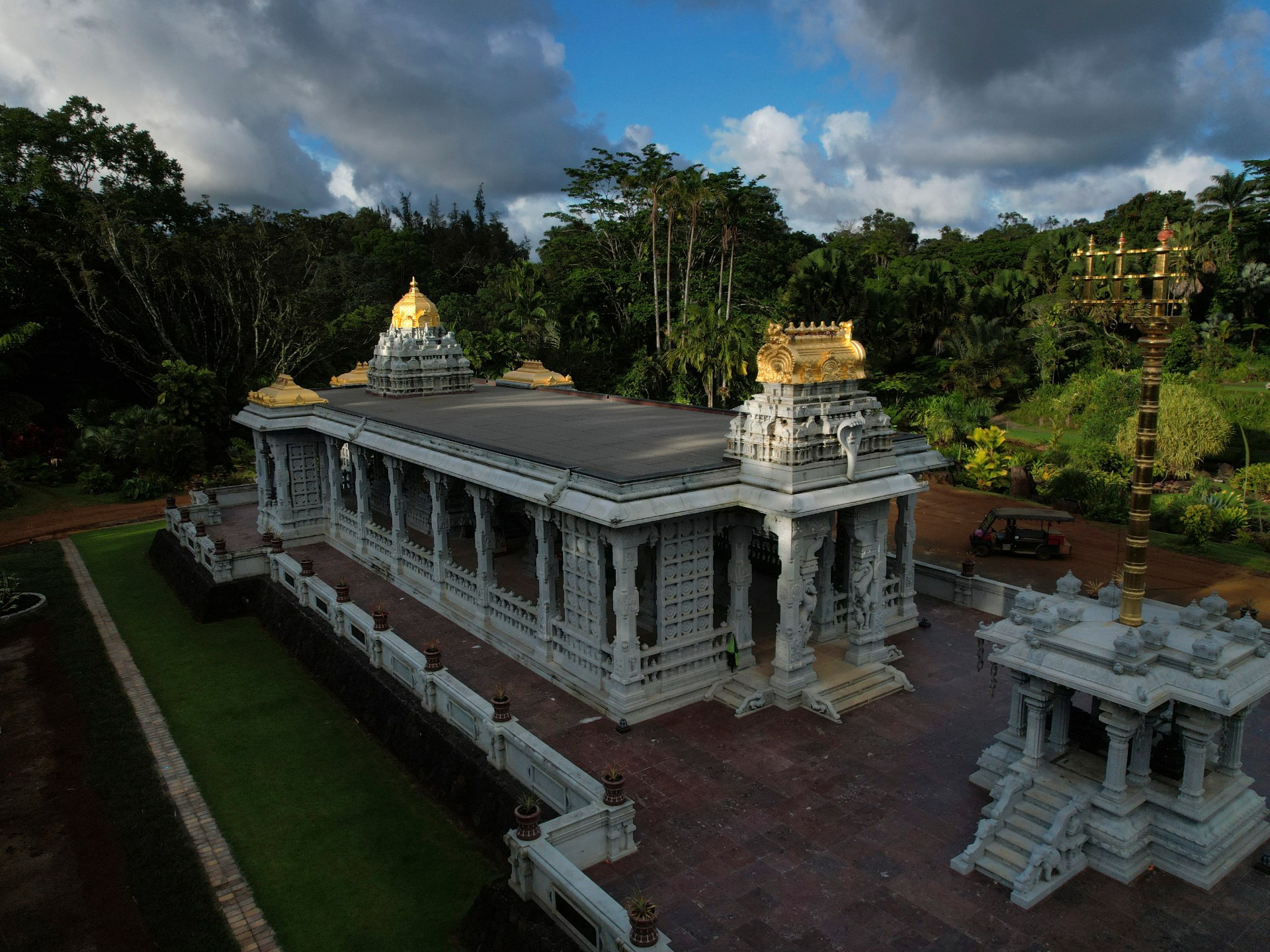On Hawaii island, the West’s only all-granite, hand-carved Hindu temple | Religion
It is the only all-granite, hand-carved Hindu temple in the West built without power tools or electricity, and it is nestled on one of the smaller islands in Hawaii surrounded by lush gardens and forests.
On the island of Kauai, the presence of the Iraivan Temple – a white granite edifice with gold-leafed domes, modelled after millennia-old temples in southern India – is unexpected and stunning. Less than 1 percent of Hawaii’s 1.4 million residents are Hindus and on Kauai, the number of Hindus may not even exceed 50, according to some estimates.
But that has not deterred the two dozen monks living at the Kauai Aadheenam campus from being good neighbours and stewards of their faith, drawing pilgrims and seekers from around the globe. In this all-male temple-monastery complex, the monks study and practise Shaivism, a major tradition within Hinduism, which holds Lord Shiva as the supreme being.
One of the order’s monks, who has spent decades supervising the temple’s construction and tending to its gardens, is Paramacharya Sadasivanatha Palaniswami, who came to the Kauai community of Kapaa in 1968 with his teacher and the centre’s founder, the late Satguru Sivaya Subramuniyaswami.
He says the Iraivan Temple was inspired by the founder’s mystical vision of Lord Shiva seated on a large boulder on these grounds. Its construction began in 1990 and continued after the founder’s death in 2001. The word “Iraivan” means “he who is worshipped” in Tamil, a language spoken about 13,000km (8,000) miles away in southern India’s Tamil Nadu state.
The monks created an entire village in India for the artisans who hand-built the temple over the last 33 years, said Palaniswami.
“Our guru believed that electricity brings a magnetic force field and a psychic impact,” he said. “It’s like when the power goes out during a storm, something different happens when there is no electricity. There is a certain quiet, a calmness.”
Illuminated only by oil lamps, Iraivan has no fans or air-conditioning. Its architectural style is inspired by the Chola Dynasty, which ruled parts of India and Sri Lanka for about 1,500 years, starting in 300 BC.
The main deity is the 318kg (700-pound) quartz crystal shivalingam, an abstract representation of Shiva. The campus also houses Kadavul Temple dedicated to Shiva in the cosmic dancer form, or Nataraja.
Priest Pravinkumar Vasudeva arrived in March, when the temple – a formation of 3,600 stones, pillars and beams made with roughly 3.2 million pounds of granite – was consecrated. He is still amazed it stands on this tiny island.
“In India, you could possibly build something like this, but it hasn’t been done,” he said. “Here, it is nearly impossible, but it has been done.”
Monks say the order began in 1948 with founder Subramuniyaswami, a former San Francisco ballet dancer who sought out a spiritual teacher. In northern Sri Lanka, Guru Yogaswami initiated him into Shaivism and instructed him to build “a bridge between the East and the West”, said Palaniswami, the garden-tending monk.
Based in San Francisco in 1969, the founder “felt the sacred pull” of the Kauai property while on a retreat there, the monk said. It was a rundown Tropical Inn resort at the time.
To native Hawaiians, the plot of land was known as Pihanakalani, or “the fullness of heaven”. Cognizant of that connection, Subramuniyaswami wanted to make sure the new temple aligned with native Hawaiian spirits.
So, 35 years ago, he reached out to Lynn Muramoto, a local Buddhist leader who had navigated a similar situation. She is the president of the Lawai International Center on Kauai, which is home to 88 Shingon Buddhist shrines on an ancient sacred site where Hawaiians once came for healing.
She visited the temple site with the late Abraham Kawai’i, a revered Hawaiian spiritual practitioner, or kahu, and witnessed the “deeply moving” moment when Kawai’i called the location “perfect”.
Sabra Kauka, a native Hawaiian cultural practitioner on Kauai, said she was “a little aghast” in the beginning, but then consulted Aunty Momi Mo’okini Lum, her calabash aunt who is descended from Moikeha, the chief from Tahiti who built Pihanakalani some 1,000 years ago.
Lum told her the monks had the means to take care of the land in perpetuity. “And so I laid down my concerns,” she said.
Kauka praised the monks’ landscaping, from plant choices to controlling invasive species.
“The very fact that we have people on this island who care for our historic places, realise the value of them and are taking care of them in an exquisite way is remarkable,” Kauka said.




